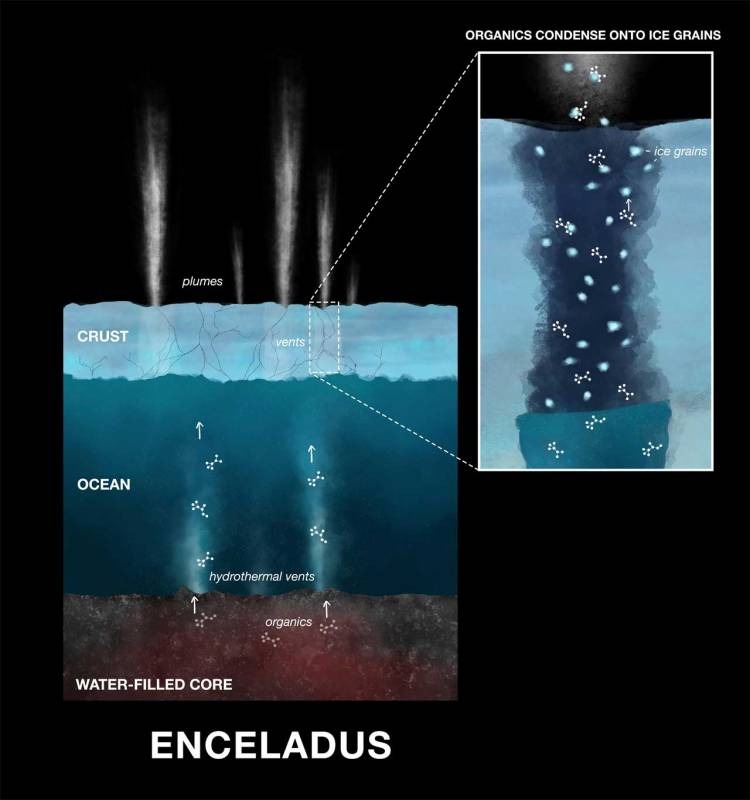New Organic Compounds Discovered In Ice Plumes Of Enceladus
NASA has announced that new kinds of organic compounds, which are the ingredients for amino acids, have been detected in the plumes of ice spewing from Saturn's moon Enceladus. The moon has powerful hydrothermal vents that eject material for the core of the planet that mixes with water from the moon's massive subsurface ocean.
The water mix is released into space as water vapor and ice grains. NASA has found molecules condensed onto the ice grains that have nitrogen and oxygen-bearing compounds. On Earth, similar compounds are part of chemical reactions that produce amino acids, which are the building blocks of life.
NASA believes that hydrothermal vents on the ocean floor of Enceladus provide energy that fuels the reactions, which is exactly how it happens in the oceans of Earth. NASA notes that it doesn't know yet if amino acids are needed for life beyond Earth. The agency notes that "finding the molecules that form amino acids is an important piece of the puzzle."
The data the team is studying comes from the Cassini mission that ended in 2017. The data it gathered will be studied for decades to come. The scientists used data from Casini's Cosmic Dust Analyzer that detected ice grains emitted from Enceladus into Saturn's E-ring.

These new findings complement the discovery the team made last year of large, insoluble complex organic molecules believed to float on the surface of Enceladus' ocean. The team says that the planet has reactive building blocks in abundance. Some of the most likely locations in our solar system for life outside Earth are believed to be moons like Enceladus.
